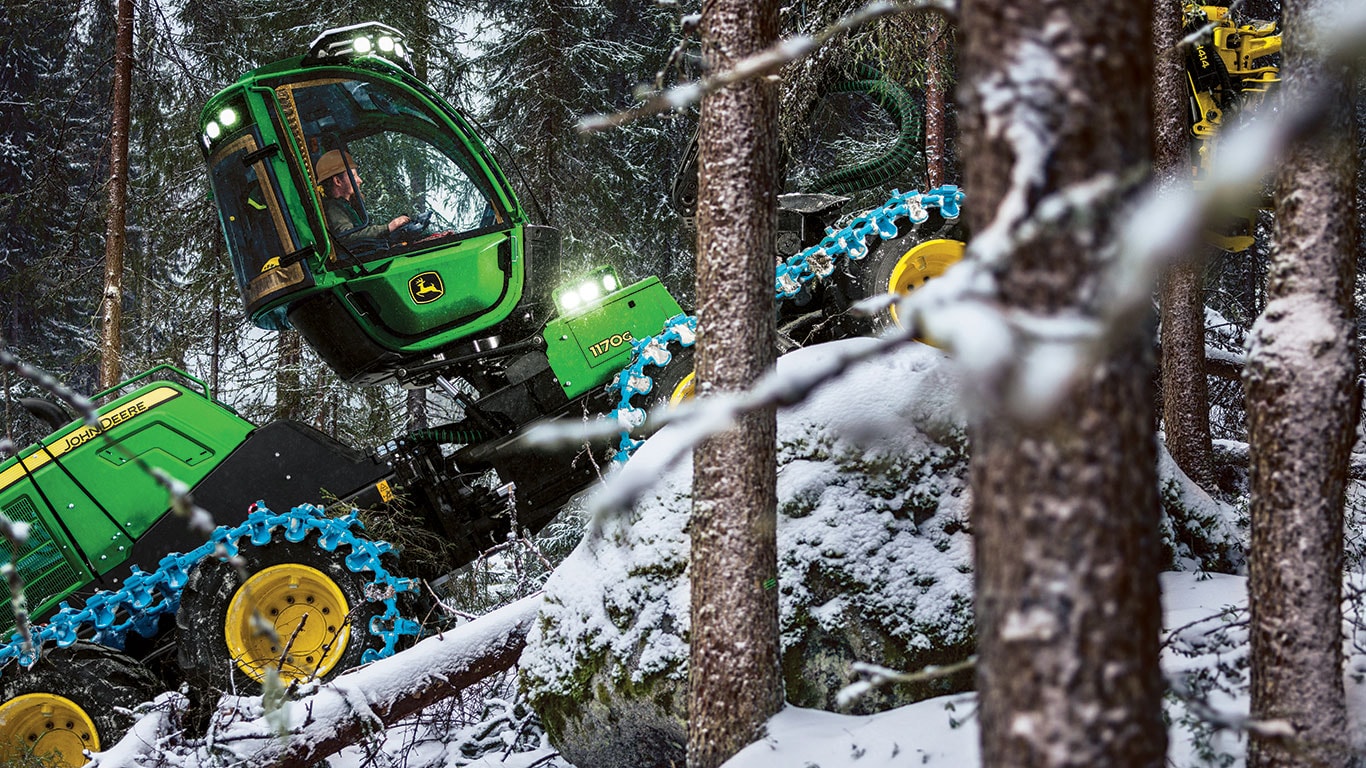Winterizing Forestry Equipment
Winter is a booming time for the forestry industry. It is most well known as a good time of year for logging. The frozen ground makes logging simpler, and typically safer, especially for John Deere skidders and other forestry machinery. That said, these same conditions can wreak havoc on your forestry equipment, especially if it is not properly cared for.
Perform Routine Upkeep
Winterizing your machine properly at the beginning of the season, while also performing routine upkeep, helps prevent winter conditions from becoming stressful for you, as well as your crew. Winter upkeep predominantly focuses on keeping your vehicles healthy, especially while in fluctuating weather conditions. It also helps keep them free from ice and snow, which could damage pipes and undercarriages. Additionally, it keeps your engine and gas tanks safe for use. Let’s take a look at some more items you will want to take a look at when the weather gets quite cold.
- Operator’s Manual: The first thing you will want to do when trying to maintain forestry equipment in the winter is to consult an operator’s manual. This will provide you with guidelines when it comes to oil, coolant and fuel.
- Check Battery: Check your vehicle’s battery before the season begins, and then also periodically through your work season. The owner’s manual also advises that you check hydraulic and fuel filters - giving you specifics on when they should be replaced, for optimum performance.
- Check Electrical Wiring: Checking the electrical wiring allows you to ensure your equipment will still be running at peak performance, and that there is a lesser chance of a malfunction.
- Inspect the Rubber Hoses and Parts: This is necessary because you will want to make sure there are no pinholes. Any chemicals you put in these parts can eat away at the rubber.
- Refill your Fuel Tank Daily: Due to the cold weather, you will want to make sure your tank is always refilled after each use.
- Grease Up Unpainted Metal Parts: This ensures no rust forms on the exterior of your vehicle and protects them from the elements.
- Inflate your Tires: Inflating your tires to the recommended PSI allows for maximum stability during use.
- Remove Any Debris: Before taking your equipment on the road, you will want to make sure that any ice, snow, branches, or additional debris are removed.
- Store Equipment: You will also want to store your equipment and all your attachments in a facility when not being used, so you can keep them out of the elements.
- Warm Up Diesel Engines: It is very important to warm your diesel engines up in the morning before beginning your work because skipping this step can result in leaks or gasket failures. Taking the time for the engine oil and coolant gauges to warm up allows the hot and cold engine parts to expand fully and ensure you don’t damage the engine.
The highest priority at any logging site is safety. Regularly obtaining full safety inspections of your equipment helps to avoid failures, which could be particularly hazardous to the operator, or even the ground crew. Keeping your business’ forestry equipment in top shape, especially during harsh winter months, protects your machines, vehicles, and investments, so you can keep moving.
For more information regarding forestry equipment, contact your local John Deere dealer.
Additional Resources:

